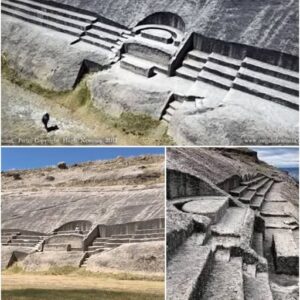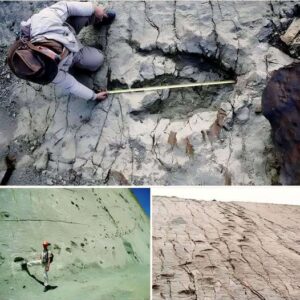The White Mountain in Wyoming holds a remarkable treasure trove of history in the form of handprints carved into its soft sandstone surface. These handprints, thought to be created by the Ancestral Eastern Shoshone between 1000 and 1800 CE, provide a fascinating glimpse into the culture and traditions of this ancient tribe.
The intricate handprints etched into the White Mountain are a testament to the skill and artistry of the Ancestral Eastern Shoshone people. Each handprint is a unique work of art, telling a story of the individual who left their mark on the stone centuries ago. These handprints serve as a connection to the past, allowing us to learn more about the daily lives, beliefs, and customs of this ancient culture.

The presence of these handprints on the White Mountain is significant not only for their cultural value but also for their historical importance. They offer valuable insights into the rituals and practices of the Ancestral Eastern Shoshone, shedding light on their spiritual beliefs, social structures, and artistic expressions. Studying these handprints can help us better understand the rich heritage of the Eastern Shoshone people and appreciate the depth of their cultural legacy.
The preservation of these handprints is crucial for ensuring that future generations can continue to learn from and appreciate this ancient form of expression. By protecting and safeguarding these delicate carvings, we can ensure that the story of the Ancestral Eastern Shoshone continues to be told for years to come.
As we marvel at the intricate details of these handprints on the White Mountain, we are reminded of the enduring legacy of the Ancestral Eastern Shoshone people. Their artistry and creativity, as demonstrated in these carvings, continue to inspire and educate us today. Through the study and preservation of these handprints, we honor the memory of this ancient culture and pay tribute to their lasting impact on the history of Wyoming.





